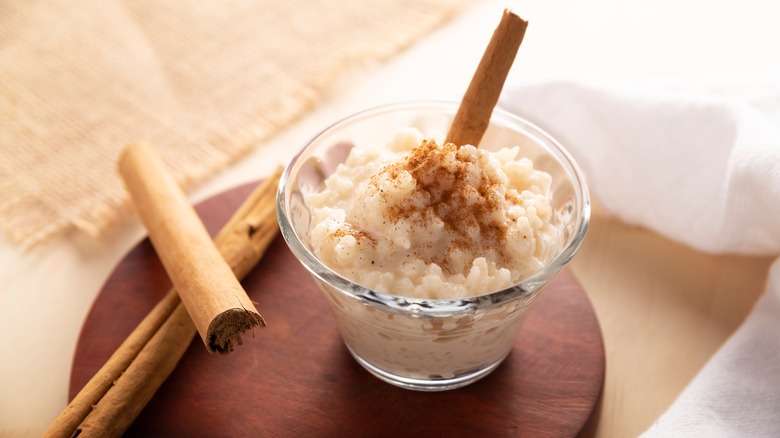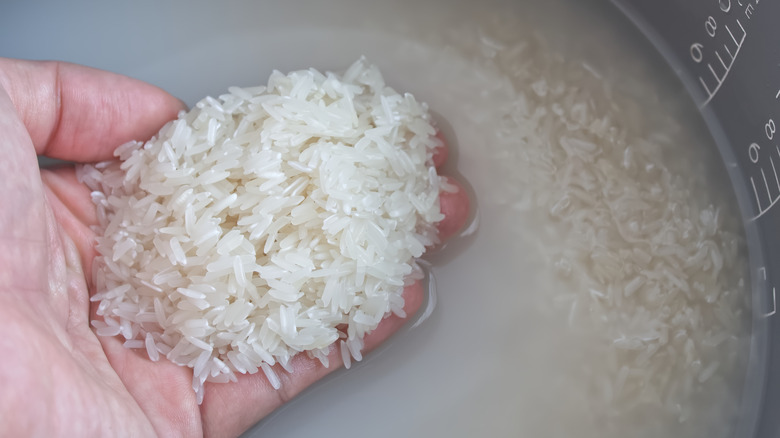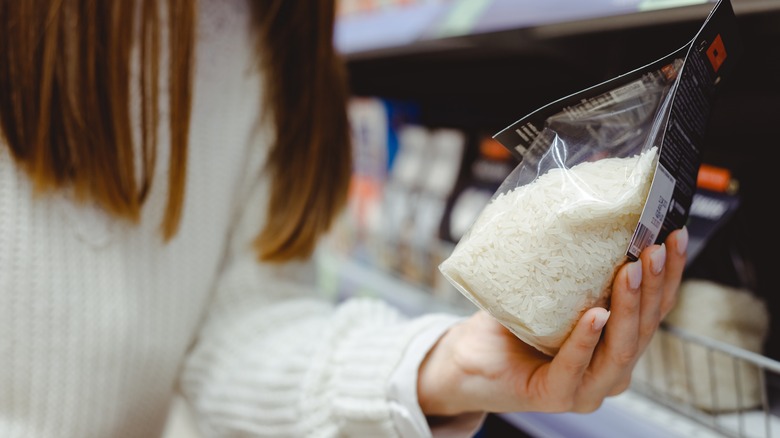Is It A Good Idea To Rinse Your Rice Before Making Rice Pudding?
Consistency is everything when it comes to rice pudding. The ultimate goal is a dish that's creamy and porridge-like, with perfectly cooked rice that still has some firmness to it. No one wants rice pudding that is too mushy or sticky and gummy. How your rice pudding turns out has a lot to do with the science of starch and the cooking process. The first decision you must make? To rinse or not to rinse the rice.
Compounding the conundrum is the fact that the answer is not all that clear cut. Some recipes direct you to rinse the rice first before preparing the pudding, while others insist it's not necessary. Let's take a look at why it might be advantageous to wash those grains.
Those in the pro-rinse camp argue that it helps to remove extra starch and sort of separate the individual grains. The thinking is that, when cooked, the washed rice won't clump together as much into a mushy mess and will instead be creamier and smoother.
Team no rinse
Those who are anti-rinse prefer to leave the starch on the rice because they credit it with thickening the pudding, giving it a richer and denser texture. This is thanks to two glucose molecules which make up starch – amylose and amylopectin. Here's where the science of starch comes in.
Different rice varieties have different levels of these molecules and that can affect consistency when cooked. Long grain rice, such as jasmine or basmati, tends to be more amylose heavy, resulting in fully separated grains, while rice varieties that are higher in amylopectin, like the glutinous rice that is popular in Asia, will give you super sticky rice. For a creamy risotto or rice pudding, team no rinse recommends a medium-grain rice with the starch intact, although it seems perhaps the type of rice matters more than whether or not it gets washed.
Another argument against rinsing is that exposing rice to water prior to cooking could affect the final dish since rice pudding requires the grains to absorb liquid and soften gradually. It also adds an extra step to the whole process that may not be necessary.
Isn't it unsafe not to wash your rice?
Then there's the whole sanitary and health thing. In some places, it's common practice to give your rice a rinse to remove any dirt, insects, or leftover pieces of hull prior to cooking, but it's probably not necessary. Rinsing also does nothing to reduce the potential bacterial load. There are studies, however, that have shown that washing reduces the amount of microplastics in packaged uncooked rice by 20-40%. So where does that leave you? Washing your rice is really a matter of personal preference and is unlikely to have a huge impact on your health either way.
For rice pudding, the research indicates it's up to you whether you wash the rice first, but what kind of rice should you be using in the first place? Regular long-grain white rice is the ideal variety for rice pudding. That's because long-grain rice maintains its individual grains when cooked unlike short-grain rice, which tends to be stickier and clump together. It also has the right balance of starch to achieve the desired creamy consistency of rice pudding. Plus, long-grain white rice has a subtle and neutral taste that allows it to really soak up the flavors of the milk, sugar, and spices used in the pudding without overpowering them.


